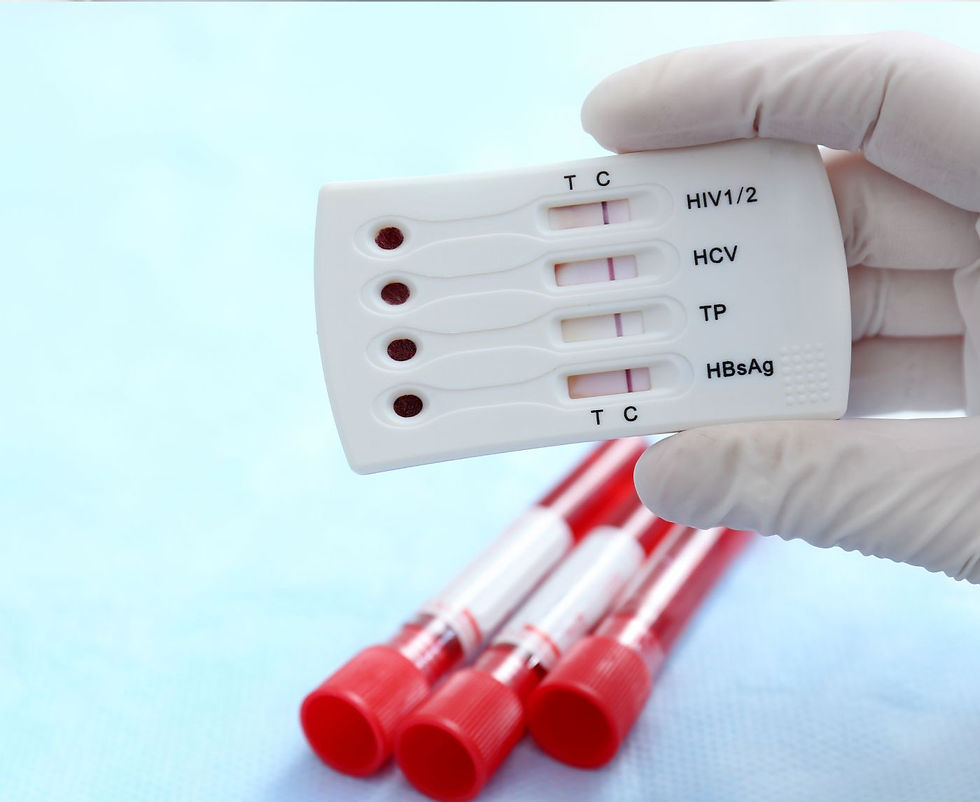Can Tooth Removal Help Alleviate Chronic Pain?
- dentalclinicdubai7
- Jan 21
- 6 min read
Tooth removal, also known as tooth extraction, is a procedure often associated with relieving acute dental pain caused by issues like tooth decay, infection, or trauma. However, many people wonder if tooth removal can also help alleviate chronic pain, which persists over time and can negatively impact overall well-being. In this article, we’ll explore how Tooth Removal In Dubai might help alleviate chronic pain, the conditions that can benefit from the procedure, and when it’s the best option for long-term pain relief.
Understanding Chronic Pain and Its Causes:
Chronic pain is defined as pain that lasts for an extended period of time, often for months or even years. This type of pain can have a significant impact on a person's quality of life, interfering with daily activities, work, and sleep. While chronic pain can stem from a variety of medical conditions, dental pain can also be a significant factor.
Dental Issues Leading to Chronic Pain:
Tooth Decay: Deep cavities can lead to long-lasting pain that worsens over time.
Gum Disease: Periodontal issues can cause persistent discomfort and inflammation.
Infected Teeth: A tooth infection, or abscess, can lead to throbbing, constant pain.
Jaw Issues: Conditions like temporomandibular joint (TMJ) disorders can lead to jaw pain that can be connected to tooth problems.
When these dental problems are left untreated, they can develop into chronic pain conditions that can affect not only your teeth and gums but also your overall health.

When Is Tooth Removal Considered for Chronic Pain Relief?
Tooth removal is generally a last resort when other treatments such as fillings, root canals, or periodontal therapy have failed to relieve chronic pain. However, in certain situations, removing a problematic tooth can help alleviate long-term discomfort and prevent further complications.
Impacted Wisdom Teeth:
What Happens: Wisdom teeth, or third molars, often emerge during late adolescence or early adulthood and can cause significant pain when they don’t have enough space to come in properly.
How It Alleviates Pain: Impacted wisdom teeth can lead to infections, swelling, and jaw pain. Removal of these teeth can immediately relieve the discomfort caused by pressure and misalignment.
When to Remove: If the wisdom teeth are impacted and causing chronic pain or infection, removal is often recommended to prevent further complications.
Severely Decayed or Infected Teeth:
What Happens: Tooth decay that extends into the pulp or nerve of the tooth can cause constant, throbbing pain. If the infection is not treated, it can spread to the surrounding areas, causing further pain and health issues.
How It Alleviates Pain: Removing a severely decayed or infected tooth can eliminate the source of the chronic pain, especially if a root canal is not viable or the infection is too severe.
When to Remove: If the tooth is beyond saving through restorative treatments, tooth removal may be the most effective way to stop the pain and prevent it from spreading.
Teeth with Advanced Gum Disease:
What Happens: Gum disease (periodontitis) is a progressive condition that can cause the gums to recede, leading to exposed tooth roots, bone loss, and chronic pain.
How It Alleviates Pain: If a tooth is severely affected by gum disease and cannot be saved through treatments like scaling or root planing, extraction can relieve pain caused by inflammation, infection, or loose teeth.
When to Remove: If gum disease has progressed to the point where the tooth cannot be saved and is causing continuous pain, removal may provide long-term relief.
TMJ and Jaw Pain Related to Tooth Alignment:
What Happens: Temporomandibular joint (TMJ) disorders can cause significant jaw pain, headaches, and discomfort, sometimes linked to misaligned or damaged teeth.
How It Alleviates Pain: In some cases, removing a tooth that is causing misalignment in the jaw can help alleviate chronic jaw pain and headaches associated with TMJ disorders.
When to Remove: Tooth extraction may be considered if misalignment or bite issues caused by a particular tooth are contributing to chronic jaw pain or TMJ dysfunction.
Overcrowding and Bite Problems:
What Happens: Overcrowding of teeth can cause pain by putting pressure on surrounding teeth and the jaw, potentially leading to problems such as bite misalignment, headaches, and discomfort.
How It Alleviates Pain: Removing one or more teeth to alleviate overcrowding can help relieve the pressure on the remaining teeth and reduce chronic pain caused by bite problems.
When to Remove: If overcrowding is severe and other orthodontic treatments like braces or clear aligners cannot fix the issue, extraction may be needed to alleviate pain.
The Benefits of Tooth Removal for Chronic Pain Relief:
Tooth removal is not always the first option for chronic pain relief, but in certain circumstances, it can provide significant benefits.
Immediate Pain Relief:
How It Helps: The most obvious benefit of tooth removal for chronic pain is the immediate relief it provides by eliminating the source of discomfort. If the pain is caused by infection, decay, or misalignment, extraction can offer a quick resolution.
Long-Term Benefits: Once the tooth is removed, the pain often subsides within a few days as the body begins the healing process.
Preventing Further Complications:
How It Helps: Removing a problematic tooth can prevent more serious complications from developing. For example, removing an infected tooth prevents the spread of infection to surrounding teeth or the jawbone.
Long-Term Benefits: Preventing complications like abscesses, bone loss, or further misalignment can contribute to better oral and overall health in the long run.
Improving Oral Health:
How It Helps: Chronic pain caused by tooth problems often results in poor oral hygiene because patients avoid brushing or flossing due to discomfort. Once the source of pain is removed, patients are more likely to resume proper oral hygiene practices, improving their overall dental health.
Long-Term Benefits: By removing the tooth causing pain, patients may experience improved oral health, which can also have positive effects on general health.
Enhanced Quality of Life:
How It Helps: Chronic pain can take a significant toll on a person’s life, affecting everything from mood to productivity. By alleviating tooth-related pain, patients often experience improved quality of life, including better sleep, mood, and overall well-being.
Long-Term Benefits: With pain reduced, individuals can engage in daily activities without the constant distraction of dental discomfort.
Risks and Considerations of Tooth Removal:
While tooth removal can be an effective solution for chronic pain, there are also risks and considerations that should be taken into account.
Post-Extraction Pain and Swelling:
What Happens: After tooth removal, some pain and swelling are normal as the extraction site heals. However, post-extraction pain is typically temporary and can be managed with medications and proper aftercare.
Consideration: The discomfort from the extraction may last a few days, but it should eventually subside.
Infection and Complications:
What Happens: As with any surgical procedure, there is a risk of infection after a tooth is removed. In some cases, complications like dry socket or infection can delay healing and cause additional discomfort.
Consideration: Following aftercare instructions, including keeping the extraction site clean and taking prescribed antibiotics, can minimize the risk of infection and promote faster healing.
Impact on Surrounding Teeth:
What Happens: In some cases, removing a tooth can impact the alignment or functionality of surrounding teeth, especially if the extraction is part of a larger orthodontic plan.
Consideration: Your dentist or oral surgeon will assess the impact of removal on surrounding teeth and ensure that the extraction won’t negatively affect your bite or oral health.
Emotional Impact:
What Happens: For some individuals, the idea of tooth removal can be emotionally challenging, especially if the tooth holds sentimental value or if the procedure is viewed as invasive.
Consideration: If you feel anxious or nervous about tooth removal, it’s important to discuss these concerns with your dentist. They can provide support and help ease your fears.
Conclusion:
Tooth removal can be a viable solution for alleviating chronic pain, especially when the pain is caused by issues such as impacted teeth, infection, misalignment, or gum disease. While tooth extraction is not always the first option, in certain circumstances, it can offer immediate relief, prevent further complications, and improve overall oral health. However, it’s important to consider the risks and benefits of the procedure and consult with your dentist or oral surgeon to determine if tooth removal is the right choice for your chronic pain. With proper care, tooth removal can provide long-term relief and significantly enhance your quality of life.








Comments